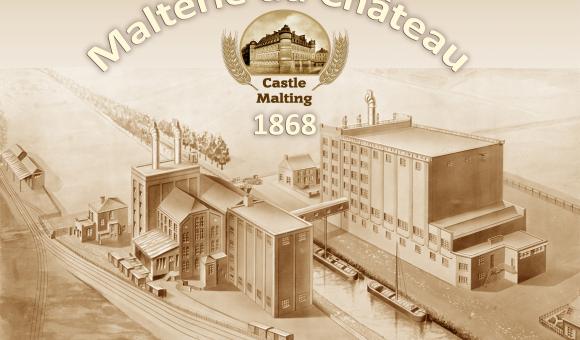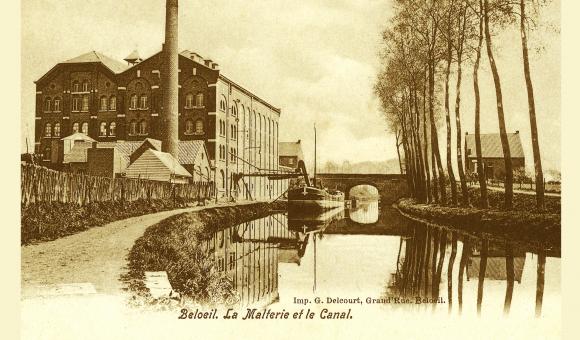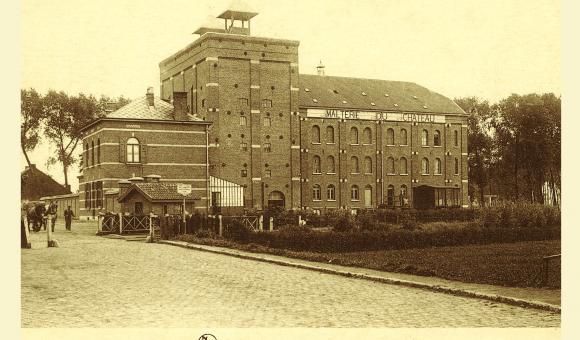This year, the Castle Malting of Beloeil, in Hainaut, celebrates its 150th birthday. It employs 84 people and 96% of its malt production, essential to the production of beer, a Belgian speciality, is exported in 124 countries.
The keyword of the Castle Malting is and has always been Devotion. This is illustrated by a desire to always do better in the service of more than 2600 brewers in 124 countries, including Brazil, United States and Russia. Always looking for improvement, it does not plan to stop its development and explores new markets such as China. This applies also to diversity; the factory produces more than 70 different types of malt, and even a selection of roasted and caramel malts with exceptional taste.
Few companies can brag about a flourishing activity for 150 years. It is an opportunity to trace the history of the Castle Malting.
Thanks to the monks, beer was already a popular drink in the 7th century. Although the French Revolution put an end to the brewers’ guilds and destroyed a lot of abbeys while the product was expanding, brewing activities returned with Napoleon’s arrival. These activities became a sector of the economic recovery.
In order to supply these new breweries, malt production developed. The malting of Beloeil, the first one in Belgium, started its activities in 1868, in the middle of a region already renowned for its brewing barley production.
Traditional malting, a method still applicable now, was implemented. At that time, only staple malt was produced but other types were developed through the years. Then the malting company installed 108 perpendicular silos from different sizes that allowed the development and the current storage of the vast range of traditional and special malts.
The seeds arrived at the malthouse by barge, on the canal straddled by the two parts of the industrial installation, connected by a footbridge, which still exists; or by train, by the railway line that ran along the canal. It is through this same canal that the approximatively 2000 tonnes of malt originally produced annually were sent to Belgian and even foreign breweries. In the 1890s, Beloeil malting company already exported to the United States.
Despite its success, the malting company of Beloeil, unfortunately endured the torments of the two World Wars. It was partially destroyed by bombings during WWI. It was rebuilt in 1923 through the “War Damages” fund supplied by Germany to pay damages to neighbouring countries.
Then, in 1944, second bit of bad luck: in order to slow down the arrival of the American army, a young German soldier blew the footbridge that spanned the canal. The soldier, inexperienced, used too much dynamite and a part of the malting company was pulverized.
Moreover, through the years, the canal has silted up and barges could no longer reach the barley unloading dock. It took around 10 years of requests and tenacity to the competent authorities for the mud to be dredged and the canal to be accessible again. It is important for the environmental impact, of course: each barge replaces about 10 trucks.
At the beginning of the 21th century the Castle Malting was technologically equipped in order to better serve artisanal breweries, amateur brewers or even Craft Brewers: aging equipment has been replaced with new systems made of more efficient material to ensure a more environmentally friendly production.
If you are fascinated by the 150 years of the Castle Malting’s history, do not hesitate to visit its museum. It contains treasures gleaned from the corners and nooks of the site. You can discover objects, tools and equipment that illustrate the long history of the factory, from the 19th century until today.




